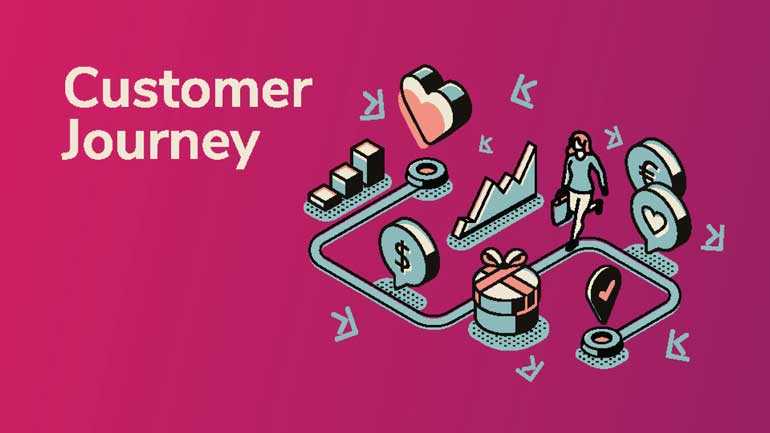Wednesday Apr 02, 2025
Wednesday Apr 02, 2025
Monday, 21 October 2019 00:00 - - {{hitsCtrl.values.hits}}

I remember very clearly the excitement of buying our very first TV set. My dad and mum excitedly chatted about it. They spoke to all their friends who had TV sets at their homes. My dad virtually had an analysis of brands and what his friends said were its strength and weaknesses. Then we visited the electronic shop. There was an agent who knows the family very well that made a couple of quick recommendations – Meltron he said or ECTV.
I distinctly remember in those days there was a wide choice – Keltron, Bharat being some of the others. My dad decided he needed to deliberate further. And negotiate costs. The exciting process of buying our first TV set lasted nearly two weeks. 
If I look at my dad as a consumer and the journey he followed – he became aware through ads on TV and print. He started the consideration process with his friends, then started evaluating based on the dealers’ recommendations. He spent further time looking at the best payment options. And then finally after a heated debate at home – dad wanted ECTV and we the kids wanted Bharat TV. He gave in to the kids. I think. And we had a brand new TV set at home.
Last week, I asked the team at office – who was the last one who had bought a TV set. The youngest member put his hand up. I asked him about the process. He said, “Oh I went online, got lucky cause there was a sale for LG flat screens, buy one 32 inch and get two smaller TVs free.” So I asked him, “What did you do?” Oh of course he said, “I bought it.”
My dad’s consumer journey that took 14 days now takes two hours. The process of awareness, consideration, evaluation and purchase – all compressed into a series of mouse clicks that is now at every consumer’s fingertips. This of course poses challenges for the marketing team and the marketing communications partner. They had it all sorted out. They know the drill. How much and where to do the awareness campaign and then constant reminders through tried and tested media vehicles, then the strong push at the point of purchase, were sufficient to ensure sales, and a happy customer experience. No longer is this the case.
Not only is the time period of the journey highly compressed and that the mediums have changed radically, but also a bad experience does not only mean a consumer lost but many losses due to sharing of the bad experience online.
Many brands and marketing teams are evolving their strategies to address the customer needs at each touchpoint to accelerate the process to purchase and then ensure the customer records a great experience resulting in loyalty and endorsements that results in new customers being enticed to follow the same journey.
So obviously it starts with some research to help understand this journey. A company has a methodology called Real-Time Experience Tracking (RET) where the consumer panel chosen is to send text messages on their cellphones every time they come across a given brand or its competitors over the period of the consumer journey. The structured message captures the brand, touchpoint type how positive the customer felt about the encounter and how persuasive it was.
My dad’s consumer journey that took 14 days now takes two hours. The process of awareness, consideration, evaluation and purchase – all compressed into a series of mouse clicks that is now at every consumer’s fingertips. This of course poses challenges for the marketing team and the marketing communications partner. They had it all sorted out. They know the drill. How much and where to do the awareness campaign and then constant reminders through tried and tested media vehicles, then the strong push at the point of purchase, were sufficient to ensure sales, and a happy customer experience. No longer is this the case
Unilever used this research well to determine why ‘AXE’ body spray campaign worked well in Poland but not in Italy. In both countries the TV ad was well-received but in Poland it was followed by high street touch points such as ‘AXE Police’ – attractive young women who would arrest young men and spray AXE all over them. Such reminders close to potential touch points were missing in Italy.
PepsiCo used RET to fine-tune its relaunch of Gatorade as a sports nutrition drink. The research showed stimuli such as posters of the brand or seeing other people drink at gyms or parks were twice as effective in shaping consumer attitudes as the same stimuli in other places.
IKEA has a brand campaign ‘Where Life Happens’ and uses Google Search expertise to make everyday life better with its products. So they renamed their products based on common problems people faced. So instead of waxing eloquent slogans about the benefits of a particular bed, they relabelled it to – ‘My Partner Snores’. A range of other products were renamed to match solutions to typical consumer problems. A great way to use a search engine to create awareness and consideration for their brand.
Nike has done a great job in being totally customer focussed. They have invested in buying a data analytics company called Zodiac. This company helps Nike analyse customer data from all its apps to know customer habits and predict purchase. Nike’s direct to consumer sales is predicted to be at $ 16 billion by 2020.
Nike has an app that I use for maintaining a record of my running. It’s a great app cause it not only gives me valuable data about my own running progress but gives me access to its products and expert advice and workout recommendations all of which I have used at different points in my life.
Nike also offers a 30-day wear test for shoes in its American stores. No need to worry if your shoe fits or not if you buy it online. Nike Fit is an app that allows you to take a pic of your feet. The hi-tech analytics in the app allows Nike to measure your feet to near perfection and offer you a perfect shoe if you choose to buy from the App. The shoe size becomes part of your personal profile information to be used by the brand if you need them to.
Ultimately Nike’s customer focus connects the brand and ensures control of their complete journey right till the purchase and expressing admiration and loyalty. Their use of technology to create very specific need based solutions is a great lesson for other companies looking to learn how to create effective customer relationships.
So the key things brands must do to keep up with the consumer journey are:
1. Research to see what their journeys are like. Don’t assume anything. Question everything.
2. It’s time to invest in a direct to consumer model. Is an app the answer? Or a website that takes the consumer to an e-commerce site to enable purchase.
3. You can now use new digital analytics to predict behaviour and anticipate his needs.
4. Use digital and social media innovative tools to further accelerate consumer journeys from awareness to purchase and then experience and advocacy.
(The writer is a marketing communications expert with 20 years of experience in multi-national locations. He can be reached at [email protected].)
Discover Kapruka, the leading online shopping platform in Sri Lanka, where you can conveniently send Gifts and Flowers to your loved ones for any event including Valentine ’s Day. Explore a wide range of popular Shopping Categories on Kapruka, including Toys, Groceries, Electronics, Birthday Cakes, Fruits, Chocolates, Flower Bouquets, Clothing, Watches, Lingerie, Gift Sets and Jewellery. Also if you’re interested in selling with Kapruka, Partner Central by Kapruka is the best solution to start with. Moreover, through Kapruka Global Shop, you can also enjoy the convenience of purchasing products from renowned platforms like Amazon and eBay and have them delivered to Sri Lanka.
Discover Kapruka, the leading online shopping platform in Sri Lanka, where you can conveniently send Gifts and Flowers to your loved ones for any event including Valentine ’s Day. Explore a wide range of popular Shopping Categories on Kapruka, including Toys, Groceries, Electronics, Birthday Cakes, Fruits, Chocolates, Flower Bouquets, Clothing, Watches, Lingerie, Gift Sets and Jewellery. Also if you’re interested in selling with Kapruka, Partner Central by Kapruka is the best solution to start with. Moreover, through Kapruka Global Shop, you can also enjoy the convenience of purchasing products from renowned platforms like Amazon and eBay and have them delivered to Sri Lanka.